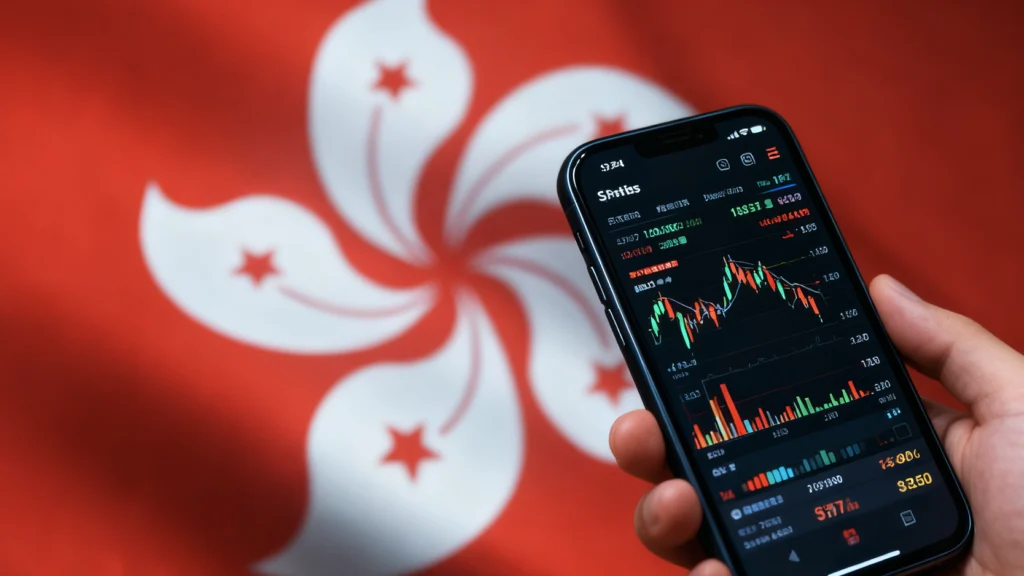Taiwan’s 2025 Forex Reserves Rank: Global Comparison & Impact
【2025 Latest】What Is Taiwan’s Global Ranking in Foreign Exchange Reserves? Understand Its Uses, Impact, and Cross-Country Comparisons in One Article

Do you often see headlines such as “Taiwan’s foreign exchange reserves hit a new high” yet feel unsure what it actually means? Many people wonder where this massive pool of funds comes from, what it is used for, and where it stands in the global ranking of foreign exchange reserves. In fact, understanding the scale of Taiwan’s foreign exchange reserves and comparing them with those of other countries helps us grasp both Taiwan’s economic strength and its potential risks. This article will guide you from the very beginning, explaining the core concepts, latest rankings, and main uses of Taiwan’s foreign exchange reserves so you can fully understand this key economic indicator in one read.
What Are Foreign Exchange Reserves and Why Are They the Stabilizing Force of a Nation’s Economy?
Before diving into rankings and uses, we must first understand the essence of “foreign exchange reserves”. They are not just a large sum held by the central bank but a crucial tool for dealing with financial crises and stabilizing the exchange rate.
Plain-Language Explanation: The Definition and Main Components of Foreign Exchange Reserves
Foreign exchange reserves refer to the foreign assets held by a country or region’s central bank that can be used for international payments. You can think of them as the nation’s “emergency reserve fund”, mainly composed of the following:
- Strong foreign currencies: The largest portion, usually globally accepted currencies such as the US dollar, euro, Japanese yen, and British pound. Among these, the US dollar accounts for the vast majority due to its dominant role in global trade and finance.
- Gold: A traditional safe-haven asset. Although it is not as liquid as currencies, it remains an important store of value in extreme situations.
- Special Drawing Rights (SDR): A reserve asset allocated by the International Monetary Fund (IMF) to its member countries, which can be used to repay debt or exchange for other currencies.
- Deposits at the IMF: A member country’s deposit positions at the IMF, also considered part of its reserve assets.
The common feature of these assets is high liquidity and high security, ensuring they can be deployed whenever needed.
Why Do Countries Hold Foreign Exchange Reserves? Three Key Reasons
A country does not hold massive foreign exchange reserves to show off its wealth, but because of several strategically important considerations:
- Maintain exchange rate stability: When the market experiences sharp volatility, such as heavy foreign capital outflows causing the local currency (like the New Taiwan Dollar) to depreciate rapidly, the central bank can use its reserves to sell US dollars and buy New Taiwan Dollars to stabilize the exchange rate and prevent panic. Conversely, when the New Taiwan Dollar appreciates excessively, the central bank can buy US dollars and release New Taiwan Dollars to ease the appreciation pressure.
- Ensure international payment capability: Countries must import large amounts of goods such as oil, natural gas, and semiconductor equipment, and these transactions typically require international currencies like the US dollar. Adequate foreign exchange reserves ensure Taiwan has the ability to purchase essential materials and keep the economy running normally, without falling into trouble due to temporary trade deficits.
- Serve as the ultimate credit guarantee: Large reserves indicate that the country has the capacity to repay external debt, which significantly boosts international confidence. Just as an individual with an excellent credit record can obtain lower-interest loans more easily, a country with strong reserves can secure better financing terms in global financial markets.
Global Foreign Exchange Reserve Rankings: Where Does Taiwan Stand?
After understanding the importance of foreign exchange reserves, the next question most people care about is: How strong is Taiwan on the global stage? By comparing foreign exchange reserves across countries, we can clearly see Taiwan’s position in the global economic landscape.
2025 Latest Global Top 10 Foreign Exchange Reserve Rankings
Although central banks regularly publish data, rankings may shift slightly due to exchange rate fluctuations and central bank operations. Below is an overview of the world’s top ten countries/regions in foreign exchange reserves based on recent data, and the specific amounts will continue to be updated. (Note: This ranking is for illustration; please refer to each central bank’s official announcements for actual data.)
| Ranking | Country/Region | Foreign exchange reserves (estimated, USD 100 million) |
Key characteristics |
| 1 | China | ~ 34,000 | Global manufacturing hub, long-term trade surplus accumulation |
| 2 | Japan | ~ 13,000 | Traditional manufacturing and financial powerhouse |
| 3 | Switzerland | ~ 10,000 | Global financial center, safe-haven currency |
| 4 | Taiwan | ~ 5,800 | Technology-driven exports with long-term surpluses |
| 5 | Russia | ~ 5,700 | Major energy exporter |
| 6 | India | ~ 5,600 | Emerging economy with strong foreign capital inflows |
| 7 | Saudi Arabia | ~ 4,500 | Major oil-exporting country |
| 8 | Hong Kong | ~ 4,300 | International financial hub with a linked exchange rate system |
| 9 | South Korea | ~ 4,200 | Export-oriented economy, similar to Taiwan’s structure |
| 10 | Brazil | ~ 3,500 | Major raw-materials exporter |
From the table above, it is clear that Taiwan’s foreign exchange reserves have long ranked among the top globally. For a relatively small economy, this is an impressive achievement and reflects Taiwan’s strong export competitiveness.
Cross-Country Comparison: A Deeper Analysis of Taiwan and Major Asian Economies (China, Japan, South Korea)
Comparing Taiwan with nearby economic powerhouses helps highlight each economy’s unique characteristics:
- China: As the world’s largest holder of foreign exchange reserves, its scale is far ahead of others. This comes mainly from its massive export trade surplus and substantial foreign direct investment (FDI) inflows. However, its enormous reserves also create significant pressure in terms of management and value preservation.
- Japan: Japan is traditionally a capital-exporting country with vast overseas assets. Although its reserves are high, they are less extraordinary relative to its economic size and net overseas assets compared with Taiwan.
- South Korea: South Korea’s economic model is the most similar to Taiwan’s, with a strong focus on high-tech exports. However, Korean conglomerates (chaebols) carry larger amounts of external debt, meaning the country requires sufficient reserves to guard against potential capital outflows. The lessons from the Asian Financial Crisis have made South Korea particularly cautious.
Compared with these economies, Taiwan not only holds high foreign exchange reserves but also has extremely low external debt. This gives Taiwan stronger defensive capabilities than many countries when facing global financial turbulence.
Where Does the Money Go? Revealing the Five Core Uses of Taiwan’s Foreign Exchange Reserves
Many people mistakenly think this money is the government’s “small private treasury” that can be freely spent. In reality, the uses of foreign exchange reserves are strictly regulated and revolve around maintaining national financial stability. Here are the five core functions:
Use 1: Stabilizing the New Taiwan Dollar exchange rate
This is the most central and direct use. When large inflows of international capital cause the New Taiwan Dollar to appreciate rapidly in the short term, impacting export industries, the central bank intervenes by buying foreign currency (buying US dollars and selling New Taiwan Dollars), increasing the supply of New Taiwan Dollars and cooling the exchange rate. This is known as “countercyclical intervention”. Conversely, if capital flows out heavily, the central bank sells US dollars and buys back New Taiwan Dollars to support the currency. A stable exchange rate is the lifeline of Taiwan’s import and export economy.
Use 2: Ensuring the ability to settle international trade
Taiwan must import large amounts of energy, raw materials, agricultural products, and key technological equipment every year. Adequate foreign exchange reserves ensure that we always have enough foreign currency to pay for these imports and keep industrial supply chains running smoothly. It functions like a company’s “working capital”, ensuring that economic activity is not interrupted.
Use 3: Enhancing the nation’s sovereign credit rating
When the world’s major credit rating agencies (such as Standard & Poor’s, Moody’s, and Fitch) assess a country’s credit risk, foreign exchange reserves are one of the key indicators. High reserves indicate strong government ability to repay external debt and lower default risk. This helps Taiwan obtain higher sovereign credit ratings, allowing both the government and private enterprises to raise funds internationally at lower costs.
Use 4: A confidence indicator for foreign investors
For foreign investors who invest in Taiwan stocks or build factories in Taiwan, the country’s large foreign exchange reserves provide strong confidence. They trust that even if they need to remit investment profits or principal abroad in the future, Taiwan’s central bank has sufficient capability to handle such outflows, preventing any situation where funds cannot be remitted due to a shortage of foreign currency. This is crucial for attracting and retaining foreign investment.
Use 5: A financial buffer for unexpected events
Global financial crises (such as the 2008 financial meltdown), rising geopolitical risks, or major domestic natural disasters can all trigger capital flight and market panic. In such moments, foreign exchange reserves serve as the nation’s final line of defense. The central bank can deploy these reserves to provide market liquidity, stabilize sentiment, and prevent systemic risks from erupting.
Myth-Buster: Are Higher Foreign Exchange Reserves Always Better?
Seeing Taiwan ranked among the top, many people instinctively assume that “the more foreign exchange reserves, the better”. This idea is only half correct. High reserves are a double-edged sword, with both advantages and disadvantages.
Advantages of High Reserves: A Buffer Against Financial Crises
The advantage is very clear, and that is “security”. As mentioned earlier, they can effectively cushion external shocks and stabilize financial markets. This is especially important for Taiwan, an economy that is highly dependent on foreign trade and relatively small in scale. A strong firewall is crucial for such a shallow-dish economy. During the Asian Financial Crisis, many countries with insufficient reserves were heavily attacked by international speculators, while Taiwan remained relatively stable, the best proof of their importance.
Challenges of High Reserves: Opportunity Costs and Potential Inflationary Pressure
However, everything comes with a price, and holding excessively high foreign exchange reserves also presents challenges:
- Opportunity cost: To maintain safety and liquidity, the central bank primarily invests reserves in low-risk, low-return assets such as US government bonds. If this capital were instead directed toward higher-return domestic investments (such as infrastructure development or technological research), it might generate greater economic benefits. Keeping a large amount of money “stored” essentially means giving up potential growth opportunities.
- Potential inflationary pressure: When the central bank accumulates reserves, it does so by “issuing New Taiwan Dollars” to purchase foreign currency. This increases the domestic money supply (M2). If the market cannot effectively absorb the excess liquidity, it may create long-term inflationary pressure that affects the cost of living.
- Exchange rate risk: The vast majority of Taiwan’s foreign exchange reserves are held in US dollar assets. If the US dollar depreciates significantly, the value of these assets converted into New Taiwan Dollars will shrink, resulting in foreign exchange losses.
Therefore, determining the most appropriate scale of foreign exchange reserves requires a delicate balance between “financial stability” and “capital efficiency”, which remains an ongoing challenge for central banks around the world.
Frequently Asked Questions (FAQ)
Q1: Are Taiwan’s foreign exchange reserves entirely in US dollars?
A: Not entirely, but the US dollar is indeed the largest component. To diversify risk, the central bank allocates assets across several major currencies such as the euro, Japanese yen, British pound, and renminbi, and also holds a certain amount of gold. However, due to the US dollar’s dominant global role and high liquidity, US dollar assets usually account for more than 70%.
Q2: Can foreign exchange reserves be freely spent, for example, distributed to all citizens?
A: This is a common misunderstanding. Foreign exchange reserves are the central bank’s “liabilities”, not the government’s “revenue”. The central bank acquires them by issuing New Taiwan Dollars to “purchase” foreign currency from exporters and others. If these reserves were given directly to the public, it would be equivalent to printing money twice, causing the money supply to spiral out of control and triggering hyperinflation, which would severely damage the economy. Therefore, foreign exchange reserves cannot be used at will like government tax revenue.
Q3: How does the central bank manage such a large pool of assets?
A: The central bank prioritizes “safety” and “liquidity” above all else, with “profitability” coming third. Funds are primarily invested in highly rated, low-risk financial instruments, most notably US government bonds. In addition, the central bank allocates assets to government bonds of other major economies, high-quality corporate bonds, and deposits placed in reputable foreign banks. A professional internal team manages these assets and diversifies allocations to spread risk.
Q4: If foreign exchange reserves increase, does it mean Taiwan’s economy is definitely performing well?
A: In most cases they are positively correlated, but not absolutely. The main sources of rising reserves are “trade surpluses” and “net foreign capital inflows”. The former reflects strong exports and is generally a sign of economic strength. However, the latter may sometimes come from short-term speculative capital. If such funds flow in quickly and leave just as fast, they may instead cause financial instability. Therefore, understanding the “composition” of reserves is more meaningful than simply looking at the “total amount”.
Summary
In summary, Taiwan’s foreign exchange reserves are not only a symbol of national financial strength but also a crucial foundation for maintaining financial stability. This article has provided a complete explanation of their importance, from definitions and global rankings to cross-country comparisons and practical uses. Understanding how foreign exchange reserves operate helps us better grasp Taiwan’s position and challenges in the global economy. Although high reserves offer strong protection, balancing them with opportunity costs will remain an important issue for Taiwan going forward.
Related Articles
-
Complete Guide to Futures Commission Fees: Understand the Structure, Negotiation, and Rebates to Stop Overpaying! Every time you open your futures statement and see the commission fees listed, have you ever felt a bit confused? You probably know that every trade comes with a cost, but you may only have...2025 年 11 月 14 日
-
Overview of the Top 5 Hong Kong Securities Companies (Quick Comparison Table) To give you a clear view, we have compiled the five most popular securities companies in the Hong Kong market. The table below provides a quick comparison of their core advantages and disadvantages, helping you quickly identify your...2025 年 11 月 10 日
-
Who is Everbright Securities? Company Background and Overview of Strength When evaluating a securities firm, the first step is to understand its “foundation”. So, what exactly is Everbright Securities? Is it worthy of entrusting your funds? Let’s begin with an in-depth analysis of its background and capabilities. Key Insight: Everbright...2025 年 11 月 10 日













